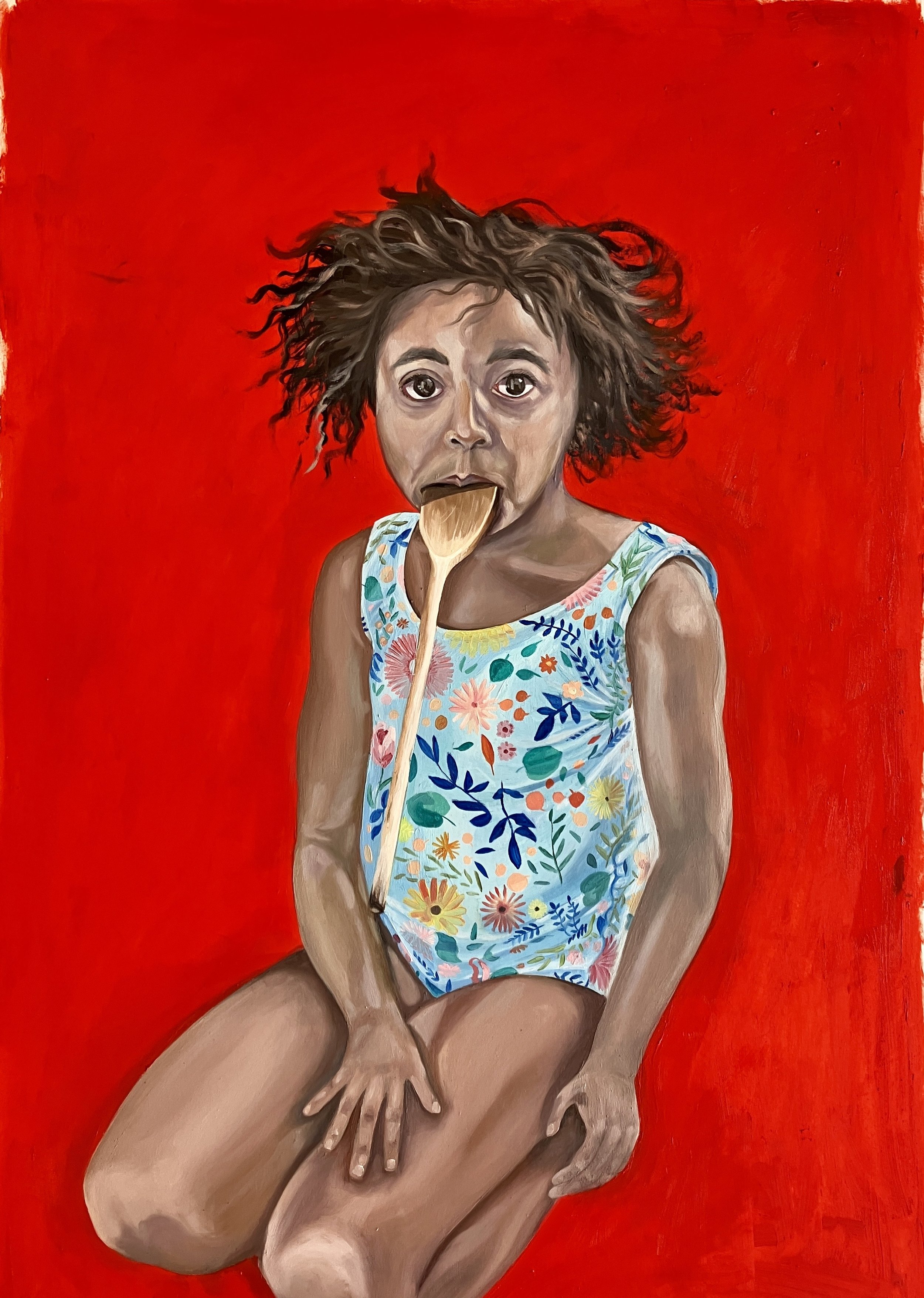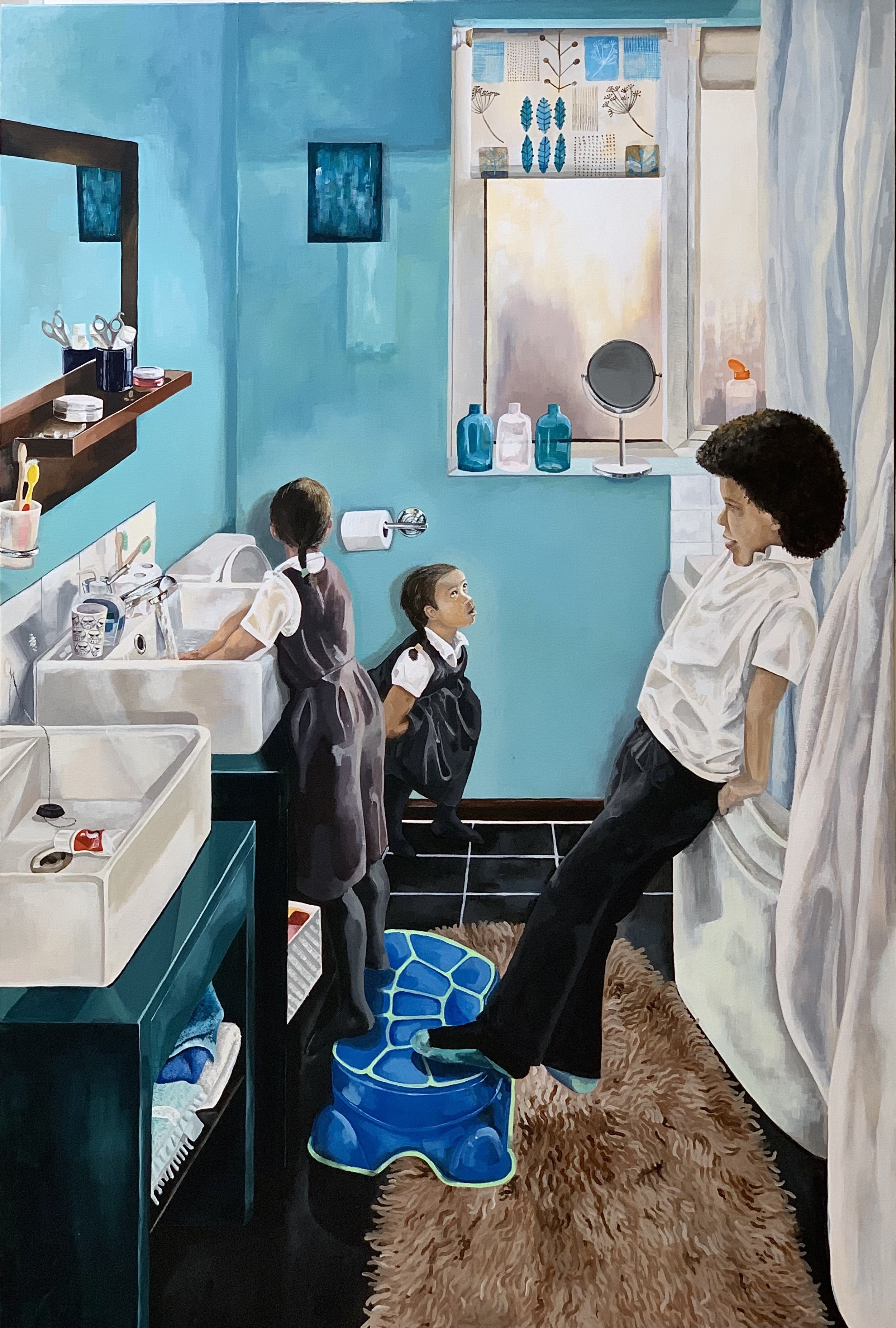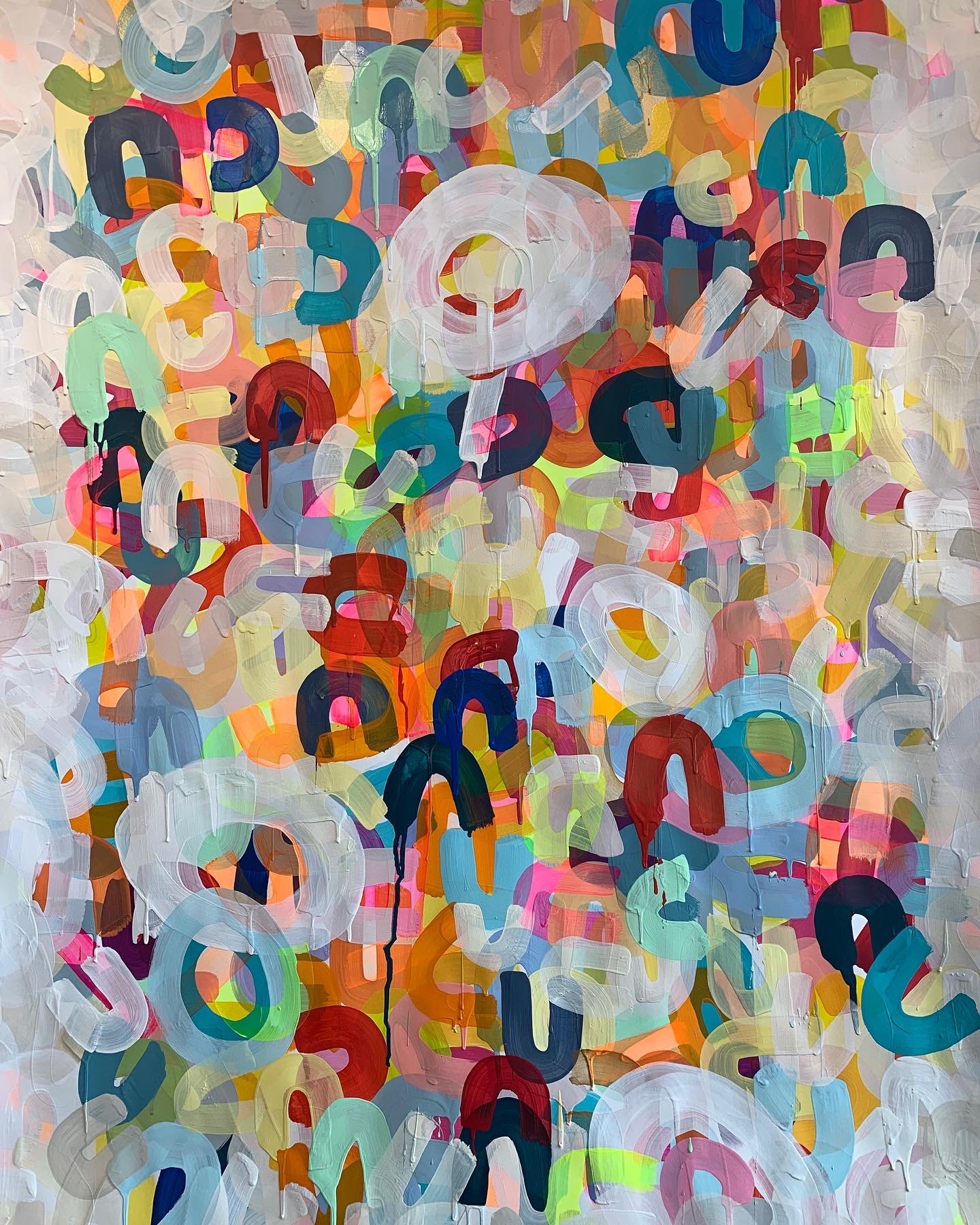ARTIST INTERVIEW: Sharon James
Tell me about yourself, describe your journey to becoming an artist.
I grew up in a religious cult and I found the perfect escape in drawing and reading. I became an avid drawer and reader. Both of which I did during many services I had to attend.
I knew at the age of around 6 that I wanted to be an artist. I never swayed other than a brief flirtation with becoming a vet or a brain surgeon.
Drawing was something that I have always loved. One of my fondest memories is of my Dad bringing home reams of computer paper. White with green stripes, many of my earliest masterpieces were upon that very paper.
I naively thought that being good at drawing was all that I needed to get into art school. Mrs Lees, my careers teacher, told me the truth. It would be fair to say that I was not academic at all. I was a serial truant and only attended lessons I liked. She will never know that her unsympathetic but honest revelation about how unlikely it would be for me to get into art school, lit a fire in my belly.
I had to get 5 O’ Levels to go to art school. That began the transformation of my education experience. I turned it around and at 16 I went on the one of the last true Art Foundation courses.
I realised that this could be my route out of home and into a career in art. I applied for Loughborough School of Art to study Jewellery and Silversmithing. Much to the surprise of my parents, I got in.
Fast forward a year, I flunked out in style, after so much repression then total freedom I went a bit crazy. I also realised that jewellery might not be for me. I transferred to Fine Art Printmaking, took a year out and did some serious travelling and growing up.
I was serious about studying when I returned. I graduated with a 2:1 after 2 years and got accepted to Camberwell School of Art for my MA.
How does your work explore your own identity? How has your art changed since you first started out as an artist?
It was during my MA that I started to explore my own identity. I produced several pieces about my sexuality and what it meant to me. It was tentative as I still had so much more to discover. After my MA, fame did not beckon.
I had good success immediately after graduating. The reality of making money to survive and pay off student debt was my next goal.
I had a hiatus of about 15 years when I was a lecturer in Art and Design. I still made work but it was almost more about scratching a creative itch than having real intent.
The resurgence of my art career happened when I took voluntary redundancy from my job. I opened a gallery, and having time and space led to me drawing every day.
I produced a massive amount of work and had a few solo exhibitions at my gallery that were well received. None of this work was anything to do with identity.
Where do you find your inspiration for your pieces? Describe your creative process.
That’s an interesting one for me. Sometimes I find it looking outside. Sometimes it’s from looking inside. There are times when I combine both.
My figurative work is all about identity. My identity on all levels, how I see myself, how my children see me, familial traits with my own family. Looking for myself in them. Documenting moments in time, my perception of them as a mother. I have an obligation to produce work that informs them about our shared heritage. Also documenting important events in current affairs. Producing a physical archive.
My abstract work is concerned with the interactions. Between colours, the use of line, shape and form. I am usually exploring an idea that can come from inside or outside. I produced a series of abstract paintings investigating diffused lights at dawn, as seen through my shower door.
My latest abstract paintings explore composition, using colour and shades of white. These paintings are influenced by graffiti art and asemic writing.
I would like you to think about your most recent work, how did the piece develop? What does this work represent?
There are things that happen every single day as mother, that are so repetitive and mundane that you almost stop noticing them. Meal times are one of them. This picture was about capturing that moment, but also the busyness of family life. The painting behind them, also capturing one of those moments.
These paintings are often composites of several photographs to create the image that I want. It’s notoriously difficult to capture candid photographs. They are all too aware of your presence. I also feel that there are few depictions of black family life.
How do you use colour to add a narrative to your art?
Colour has always been something I feel that I have a deep understanding of. I would almost go as far as to say that I’m a colour geek. I have read numerous books about it. The colours behind my portraits of family members are referencing the psychology of colours. In turn saying something about them as people.
Before I started painting, I used colour as running theme throughout my work. My children appear as red balloons in a lot of my abstract work. They are usually attached to grey boulders. Signifying the paradox of parenting. I often work with a limited palette, using colour to evoke a sense of a thing or place, without actually depicting it.
Has becoming a mother changed the way you view the world? Has this been reflected in your work?
Becoming a mother is without a doubt the biggest turning point in my work to date. It has completely changed how I view the world. Legacy and heritage are at the forefront of my mind. I want them to have a better understanding of their place in the world and where they came from. I have become more interested in depicting people. Previously, I was predominantly an abstract painter but now I prefer to work figuratively and abstractly concurrently allowing each to influence the other.
I also know that when I was a child there were very few pictures that had black people in them in a non subservient role; very few positive images. I would like to be part of the movement to reverse that.
Out of all the works that you have produced, which one are you most proud of and why?
‘Ablutions’ marked a turning point in my work. I realised that I wanted to keep telling ‘my story’. Visually documenting my life in figurative paintings. It was longlisted for the Jackson Painting Prize and it was also shown on Grayson Perry’s Art Club. It was my first large scale figurative painting. It made me keen to do more. It isn’t that straightforward though as I don’t want to paint everything. I want to be selective and I want to capture candid moments not ‘posed’ pictures.
What are your greatest achievements/challenges as an artist?
Managing to be a full time mum and an artist is without a doubt my greatest creative achievement. I do as much housework as I can before the school run or the night before to get a bit more time at the studio. I juggle constantly to get a few hours whenever I can. The fact that this interview has taken me several weeks to complete is a testament to how busy I am.
Time is my greatest challenge. I don’t have enough dedicated studio time as I also have two jobs. One to pay for my studio (I teach art 1-2-1) and one to help with the bills at home (cleaning).
Why do you think art is important in society?
Art keeps us in touch with our humanity. It always has. Artists capture all aspects of the human condition. From our fascination with sunrises and landscapes, to our inner worlds, that can entertain and bemuse us in equal measure. The very idea we can create abstract works that have never been seen before is quite mind blowing. Often capturing what it is to be alive.
I think art reminds us that there’s more to life. It can push our buttons positively and negatively, and provoke emotional responses on first contact.
Art allows everyone to have a voice if they choose to use it. No skills necessary. All that is required is the desire to say something.












